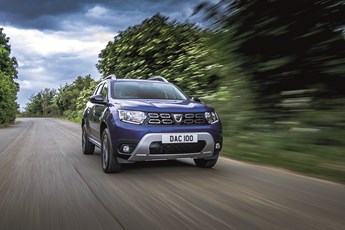We use cookies to ensure that we give you the best experience on our website. If you continue without changing your settings, we will assume that you are happy to receive all cookies on the Business Car website. However, if you would like to, you can change your cookies at any time

The start point for the best source of fleet information |
Model update: Dacia Duster Bi-fuel
Date: 07 August 2020 | Author: Simon Harris

|
|
||||||||
Any of you who have been close to the fleet car sector for as long as I have will remember bi-fuel or dual-fuel cars.
For a period around 15-25 years ago, a number of cars capable of running on both petrol and LPG were available to order from the manufacturer for delivery to the customer.
For a period, the government supported conversions with a Powershift grant for up to 60% of the cost. While it meant customers would still have to bear a good £1,000 on top of the price of a petrol version, high-mileage drivers filling with LPG regularly could see fleets break even on that cost within a year.
LPG attracts a much lower level of fuel duty compared with petrol and diesel, so has always been around 55-60% of the price of unleaded at the pumps. Fuel consumption on LPG is a little higher than on petrol, but emissions are lower, and costs are still typically lower over a fleet life cycle.
Vauxhall, Volvo, Nissan, Ford, MG Rover and Subaru were among the brands that offered LPG-converted vehicles, typically with the conversion completed by a specialist in the UK and covered by the manufacturer warranty, until the government support dried up, and they stopped overnight.
Although it stopped all new bi-fuel cars in the UK, it wasn't the end for LPG for a number of car manufacturers, as other European markets had demand, and Dacia believes the time is right to revisit LPG for the UK.
All of its models are now available with Bi-fuel, LPG-converted variants at a £400 premium over the petrol version.
Dacia is not a big brand in the fleet sector, although it does supply the Logan MCV into minicab fleets, while the Duster also sells well into the public sector.
And with a premium of £400 over a petrol equivalent, and CO2 emissions that all but match diesel variants (but without the 4% supplement on BIK tax), they could be a tempting choice for businesses looking for low-cost business mileage.
Unlike most of the previous LPG-converted new cars on the UK market, Dacia carries out the conversion during production. But, in common with others, the LPG tank is found in the spare wheel recess. Refuelling requires an adapter to be screwed into the valve behind the fuel door, as Dacia doesn't include a UK-compatible fitting to the tank, but this is supplied with the car.
Dacia says the price premium associated with hybrids and plug-in vehicles means that bi-fuel models are attuned to its customer base, and there are no plans for sister brand Renault to offer the option in its range.
The engine always starts with petrol, and can be switched to LPG with a button to the right of the steering wheel, which also has a series of LED lights to show how much gas is left, as well as a red light to show when it's empty.
Once LPG has been selected, it will switch automatically to LPG again after a restart.
The Duster offers basic transport in an SUV shape. LPG is offered in the 1.0-litre turbocharged petrol engine only, and in two-wheel drive. But there are some features that make the car palatable for someone switching from a mainstream brand.
Medium and high-grade models have a dashboard screen, and satnav and rear-view camera are available. Our special edition SE Twenty also had cameras at the front and sides of the car, monitoring proximity to the kerb, or giving a better view when approaching junctions.
We also had air conditioning, DAB radio, electric front windows, and Apple Carplay and Android Auto functionality.
The Duster is a pleasant enough car to drive, and with the 1.0 TCe has sufficient performance to make comfortable progress. Although running on LPG typically results in slightly lower torque, the Duster's turbocharged motor has enough in reserve for the occasional burst of speed to pass slower traffic.
Anyone used to a small hatchback or SUV shouldn't feel short-changed from being given a Duster as a company car - depending on specification. And running a Bi-fuel could unlock further savings.
Dacia Duster 1.0 TCe 100 Comfort
P11D: £14,435
Residual value: 43.1%
Depreciation: £8,210
Fuel: £5,754
Service, maintenance and repair: £1,749
Cost per mile: 26.2p
Fuel consumption: 35.3mpg (LPG)
CO2 (BIK band): 129g/km
BIK 20/40% a month: £67/£135
Boot space: 445 litres
Engine size/power: 999cc/100hp
Verdict |
7/10 |
|||
 |
|
 |
|
|











